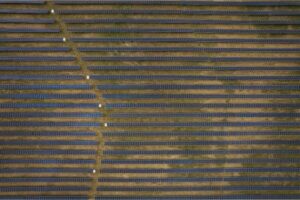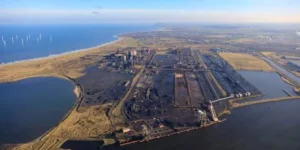How Do Wind Turbines Affect Birds and Bats?

Wind turbines, with their towering structures and massive blades, stand as iconic symbols of renewable energy. They harness the power of the wind to generate electricity and play a crucial role in the global transition to cleaner energy sources. However, as they spin gracefully, they also raise an important ecological question: How do wind turbines affect birds and bats?
The Promise of Clean Energy
Wind energy is celebrated for its eco-friendliness, as it produces no greenhouse gas emissions and contributes to reducing our reliance on fossil fuels. The sight of wind turbines dotting the landscape promises a greener future. Yet, the impact on wildlife, particularly birds and bats, has become a focal point of concern and research.
How Wildlife is Affected
Collateral Effects on Birds
Birds, often in search of prey or during migration, can collide with turbine blades. This collision can lead to injuries or fatalities, impacting both individual birds and local populations. Large birds of prey, in particular, are vulnerable due to their hunting behaviors and wide wingspans. It’s essential to understand these risks to bird populations and work on mitigation measures.
Navigational Challenges
Some studies suggest that birds can perceive wind turbines as obstacles, affecting their natural flight patterns and migration routes. Light pollution from wind farms can disorient birds, leading them away from their intended paths. Addressing these issues is vital to protect the integrity of ecosystems and bird populations.
Bats and Barotrauma
Bats face unique challenges when encountering wind turbines. While collisions do occur, the most significant threat is barotrauma, a condition caused by changes in air pressure near spinning turbine blades. Bats are particularly susceptible to this, as they have delicate respiratory systems. Barotrauma can lead to internal injuries, even if a bat doesn’t physically touch the blades.
Mitigation and Conservation
Efforts to mitigate the impact of wind turbines on birds and bats include proper siting of wind farms, adjusting turbine operation during migration periods, and developing technologies that reduce the risk of collisions. Additionally, ongoing research helps scientists better understand the behaviors and vulnerabilities of these animals.
The Balance Between Clean Energy and Wildlife Protection
The challenge lies in striking a balance between the benefits of wind energy and the conservation of avian and bat species. As renewable energy production continues to expand, it’s crucial to work towards innovative solutions and responsible practices that protect our feathered and winged companions.
Avian Radar Technology
One promising solution to reduce bird and bat collisions is the use of avian radar technology. These systems can detect the presence of birds and bats near wind turbines and automatically adjust the turbine’s operation to reduce the risk of collisions. This technology is continually evolving, and its implementation in wind farms is a significant step toward minimizing the impact on wildlife.
Bat-Friendly Blade Design
Innovative blade designs are being explored to make wind turbines more bat-friendly. These designs aim to reduce the changes in air pressure near the blades that can lead to barotrauma in bats. By modifying blade shapes or installing specific structures on the blades, such as tubercles, the risk to bat populations can be significantly reduced.

Wind turbine and stork encounter, image source: Unsplash
Strategic Siting and Curtailment
Siting wind farms strategically is a critical consideration in wildlife protection. Avoiding locations with high bird and bat concentrations or critical migration routes can minimize the risk of collisions. Curtailing turbine operation during periods of high bird and bat activity, such as migration seasons, is another effective approach.
Research and Monitoring
Ongoing research is vital to further understand the behavior and vulnerabilities of birds and bats in the vicinity of wind turbines. Researchers use techniques like radar, acoustic monitoring, and field observations to collect data on bird and bat movements. This knowledge informs better practices and mitigation strategies.
Collaboration and Regulation
Collaboration between environmental organizations, the wind energy industry, and regulatory bodies is crucial to finding solutions that balance clean energy production with wildlife conservation. Regulation and enforcement of wildlife protection measures are essential to ensure compliance within the industry.
Public Awareness and Education
Raising public awareness about the impact of wind turbines on birds and bats is essential. Educating the public about the challenges wildlife faces and the industry’s efforts to mitigate these challenges can garner support for responsible wind energy development.
Global Cooperation and Data Sharing
The impact of wind turbines on birds and bats is not confined by borders. Birds, especially during migration, often traverse multiple countries. Therefore, global cooperation and data sharing are vital to developing comprehensive solutions. Collaborative efforts between nations can help address the shared responsibility of protecting these species.
Biodiversity Hotspots
Identifying biodiversity hotspots and areas of critical importance for bird and bat populations is key. These areas often overlap with wind energy potential. Conservation organizations, governmental bodies, and the wind industry must work together to identify and protect these zones through careful wind farm siting and strict regulations.
The Public’s Role
Public awareness and engagement are essential in minimizing the impact of wind turbines on birds and bats. Individuals can support conservation efforts by advocating for responsible wind energy development, participating in citizen science projects, and reporting incidents of bird and bat collisions at wind farms. The public’s involvement can help hold the industry accountable and drive positive change.
Adaptive Management
The wind industry is increasingly adopting adaptive management practices. This approach involves ongoing monitoring and adjustment of wind farm operations based on real-time data. If a wind farm is found to have a higher impact on birds or bats than anticipated, adaptive management allows for corrective actions, such as changing turbine operation patterns, to reduce risks.

Birds and bats can be protected by changing the design of the blades, image source: Unsplash
Technological Advancements
Continued research and development are essential for improving technologies that minimize bird and bat collisions. From avian radar to blade designs, ongoing advancements can significantly enhance the industry’s commitment to wildlife protection.
Incentives for Innovation
Governments and environmental organizations can provide incentives for innovative solutions that reduce the impact of wind turbines on birds and bats. These incentives can encourage the development and implementation of new technologies and practices.
Conclusion
In conclusion, addressing the impact of wind turbines on birds and bats is a complex issue that requires a multi-faceted approach. While wind energy is essential for reducing carbon emissions and climate change, it must coexist harmoniously with the natural world. By employing advanced technology, innovative blade design, strategic siting, research, collaboration, and public awareness, we can continue to harness the power of the wind while protecting our avian and bat populations. Balancing our renewable energy goals with responsible wildlife conservation is a necessary step toward a sustainable future.






